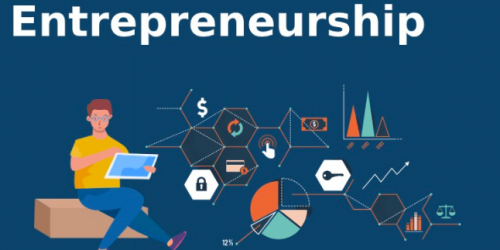5 Steps to Making Your Startup or Business Fail-Proof

5 Steps to Making Your Startup or Business Fail-Proof
Because of this epidemic, many companies have closed down or have operating difficulties, but some companies have grown in reverse.
One of the lessons learned from the worldwide pandemic is that it is impossible to foresee how external events would affect your business. No one anticipated global lockdowns. There has never been anything like it in the current corporate world. So, how can you prepare for such a situation? What about the next one? Will your firm be able to survive and prosper when the next catastrophe strikes?
During the lockdowns, there were clear winners. Companies like Amazon, Zoom, Netflix, and DoorDash were naturally predisposed to development after the rest of the world was forced to remain put at home.
However, there were certain businesses that took the full weight of the lockdowns’ economic collapse and were not only prepared to endure, but to prosper.
They were able to do so by implementing methods that had already been knit into the fabric of their business before the epidemic became a danger.
There is no such thing as a fail-proof startup or firm, and there is no such thing as a fail-proof strategy. However, there are 5 steps to take that will place your business in the greatest possible position to survive and how to grow in both good and bad times.
Step 1: To a degree, satisfy your consumers
Yes, you want your consumers to be completely satisfied all of the time. Some firms, on the other hand, aim for 100 percent customer satisfaction by attempting to be everything to all consumers while pursuing rapid expansion at all costs. That plan isn’t viable, and it won’t hold up in a crisis.
Growth at any costs is uncontrolled and uncontrollable growth. When a crisis strikes, that lack of control will have an economic and internal impact on your firm, as all those new consumers will want far more attention than your organization can provide. Customer turnover and staff conflict are almost usually the result of this.
To maintain growth constant and at high margins, rely on consumer feedback and organic growth. Don’t go all-in on one product model, client profile, or market sector to keep your growth organic. Instead, seek out consumer input, listen to it, and then experiment with new high-margin, high-value items to extend your value proposition.
Step 2: Develop a sales-driven mindset, but not straight soon
Build a formal sales process around those client profiles once you’ve established acceptable customer satisfaction levels, but not before.
The error I see here is when a firm hires too many salespeople too soon. The team then tests a variety of sales strategies, approaches, procedures, and even offers to discover which ones work. Customers’ expectations are frequently mismatched, and sales productivity suffers as a result.
When you don’t understand why something works, such as a sales process, you can’t be sure it will keep working when you need it to. A business must accelerate sales at some point in order to thrive, but if you do so before documenting the process, strengthening what works, hiring the proper people to carry out those plans, and automating where feasible, you’re setting yourself up for failure.
Step 3: Become obsessed with profits without suffocating creativity
The shift to a sales-driven company frequently succeeds at the price of innovation, but this does not have to be the case.
Finding new answers to old issues and incorporating those ideas into goods isn’t the only aspect of innovation. Finding innovative methods to make those items more successful and, eventually, lucrative is also part of innovation.
Reduce waste, save expenses, increase value, automate repetitive processes, and weed out undesirable consumers with your innovation team. Use a “less is more” strategy to improve the customer experience by removing rather than increasing features.
When this approach to innovation is already ingrained in your operating model, it becomes second nature when it is required, such as during a crisis.
Step 4: Make it a must-have rather than a nice-to-have
When a crisis strikes, every consumer and business must make judgments about where they will cut costs. Don’t be one of the people that gets cut.
Changing your customer’s perspective of your product from nice-to-have to must-have isn’t only about avoiding failure; it’s also about scaling and growing. Any business can sell any goods at any time. Companies that survive and prosper are always looking for new methods to become indispensable.
It isn’t by chance that anything becomes a must-have. It’s strategically incorporated into the product’s value proposition. It’s also ingrained in the business. Don’t simply be the product your consumers want; be the company that no one wants to quit.
One of the firms I advise is developing tools to revolutionize how businesses identify and hire talent by emphasizing employee fit, skills over experience, and careers over jobs. Since the lockdowns eased, this startup was enticed by a big potential, as many businesses are having difficulty employing anybody, not just the greatest match.
Rather than cash in on the massive wave of job-shifters by assisting any company in hiring any employee, the startup chose to stay true to its original mission and stick to its fit-first hiring model. It’s betting that when the dust settles and the jobs market returns to normal, it will be a new normal, and the startup’s software will be the must-have leader rather than just another option.
Step 5: Always be innovative, but make sensible decisions
It’s no secret that the most successful startups are constantly inventing. However, poor bets can accumulate to the point where they constitute a financial drain. Startup history is littered with firms that were once thriving but later swung in the wrong direction for no apparent reason and never recovered.
Never take your success for granted, but never change something that isn’t broken. Always think about innovation, but be cautious what you give up to get there, since you’ll need to be able to get to the mattresses if a crisis strikes.
If you like our article, welcome to add our blog link to your browser, or subscribe our blog (upper right of the page), then you can receive the latest article notification!
Have any questions, welcome to write to us for questions and discussions 🙂
Customer Service & Cooperation Proposal:[email protected]
Also!
If you want to find Startup Creation Lessons, Business Analysis Teachers, Content Marketing Experts, Negotiation Skill Coaches or Digital Marketing Lessons, or any kind of tutors, teacher, and experts,
or want to find cases, share your knowledge and expertise to earn extra income,
Welcome to visit our main website: 1on1 Global Tutor Resource Platform
Other articles:
How to be a tutor online for earning income?
How to Build a Brand in 4 Easy Steps
How to use Instagram to get free followers for your business
How to write and prepare a tutor resume? Attach example
How to Better Budgeting in 4 Easy Steps
How to Market and Operate a Coffee Shop(Cafe)
6 Ways to Acquire New Customers
4 Easy Steps to Achieve Business and Life Success







